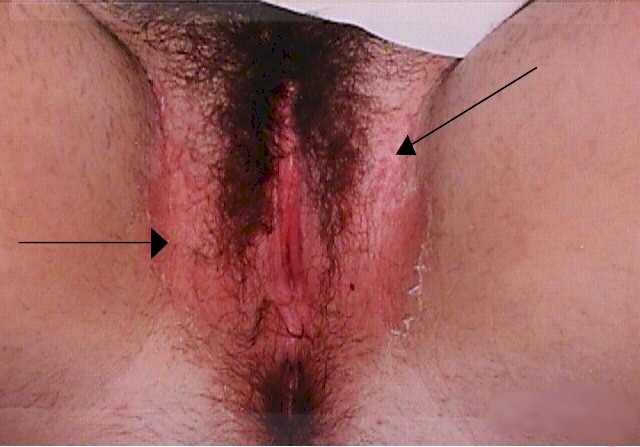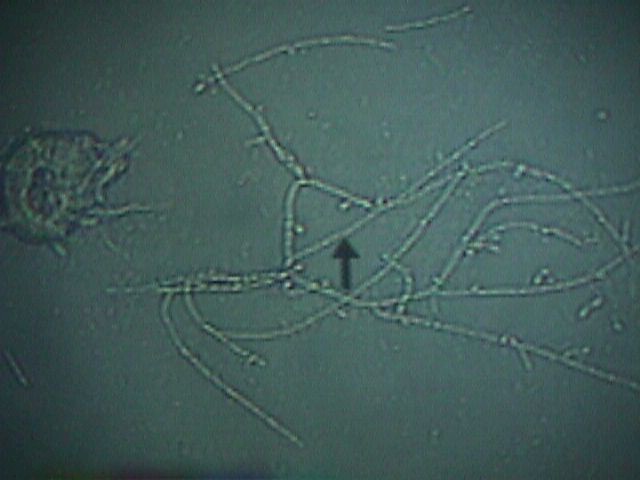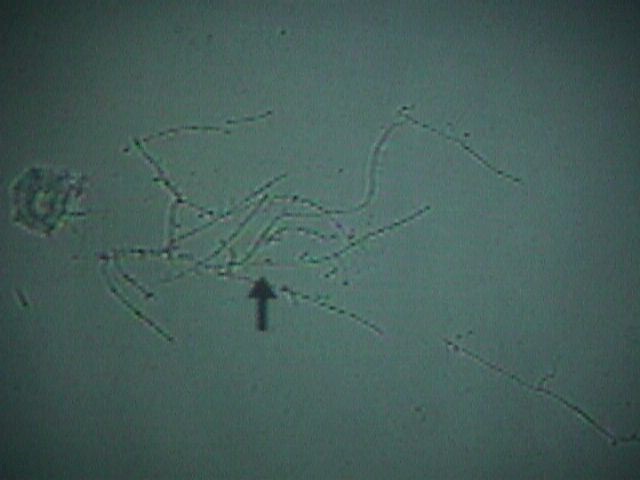|
Yeast (Candida, Monilia) |

|
 Vaginal yeast infections are common, monilial overgrowths in the vagina
and vulvar areas, characterized by itching,dryness, and a thick, cottage-cheese appearing
vaginal discharge. The vulva may be reddened and irritated to the point of tenderness.
Vaginal yeast infections are common, monilial overgrowths in the vagina
and vulvar areas, characterized by itching,dryness, and a thick, cottage-cheese appearing
vaginal discharge. The vulva may be reddened and irritated to the point of tenderness.
Yeast thrives in damp, hot environments and women in such circumstances are predisposed toward these infections.Women who take broad-spectrum antibiotics are also predisposed towards these infections because of loss of the normal vaginal bacterial flora.
Yeast organisms are normally present in most vaginas, but in small numbers. A yeast infection, then, is not merely the presence of yeast, but the concentration of yeast in such large numbers as to cause the typical symptoms of itching, burning and discharge. Likewise, a "cure" doesn't mean eradication of all yeast organisms from the vagina. Even if eradicated, they would soon be back because that is where they normally live. A cure means that the concentration of yeast has been restored to normal and symptoms have resolved.
The diagnosis is often made by history alone, and enhanced by the classical appearance of a dry, cheesy vaginal discharge. It can be confirmed by microscopic visualization of clusters of thread-like, branching Monilia organisms when the discharge is mixed with KOH.
Treatment consists of an oral antifungal agent,
- Fluconazole 150 mg oral tablet, one tablet in single dose,
or intravaginal agents:
- Butoconazole 2% cream 5 g intravaginally for 3 days
- Clotrimazole 1% cream 5 g intravaginally for 7-14 days
- Clotrimazole 100 mg vaginal tablet for 7 days
- Clotrimazole 100 mg vaginal tablet, two tablets for 3 days
- Clotrimazole 500 mg vaginal tablet, one tablet in a single application
- Miconazole 2% cream 5 g intravaginally for 7 days
- Miconazole 200 mg vaginal suppository, one suppository for 3 days
- Miconazole 100 mg vaginal suppository, one suppository for 7 days
- Nystatin 100,000-unit vaginal tablet, one tablet for 14 days
- Tioconazole 6.5% ointment 5 g intravaginally in a single application
- Terconazole 0.4% cream 5 g intravaginally for 7 days
- Terconazole 0.8% cream 5 g intravaginally for 3 days
- Terconazole 80 mg vaginal suppository, one suppository for 3 days.
If none of these products are available, douching with a weak acid solution (2 teaspoons of vinegar in a quart of warm water) twice a day will help restore an acid pH to the vagina, inhibiting yeast proliferation. Stop douching when symptoms have resolved as the douche itself tends to remove some of the protective mucous within the vagina.
Whenever the skin of the vulva is involved, more frequent treatment for a longer period of time may be necessary.
Reoccurrences are common and can be treated the same as for initial infections. For chronic recurrences, many patients find the use of a single applicator of Monistat 7 at the onset of itching will abort the attack completely. Sexual partners need not be treated unless they are symptomatic.
Read more about wet mounts and yeast


